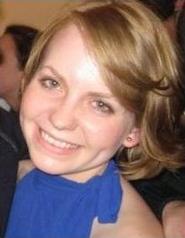
Rebecca Behrens ’11 had an internship this summer that could lead to improved lives for people whose bodies are virtually immobile. She spent her summer at UCLA’s Reed Neurological Institute, which works to advance knowledge of spinal cord regeneration. Spinal injuries are serious, and many of the patients staying at the Institute are paralyzed because of a single horrific accident. “Talking with patients who would do anything just to be able to walk again makes me feel like I'm doing something really significant,” Behrens said.
The Institute’s goal is to develop biological methods to repair nerve cells and their pathways. Behrens worked on a specific project that concentrates on ventral root regeneration. During car accidents, many victims’ ventral roots rip out of the spinal cord, causing total or partial loss of motor function. Research in rats has shown that if ventral roots are re-attached to the spinal cord, the victim could recover motor control.
However, there is only a small window of time during which this surgery is possible. Gradually the ventral roots will start to shrink away from where they were once joined to the spine, and it is not feasible to stretch them back. Behrens worked with others at the Institute to see if neurologists might be able to attach the ventral roots using a graft made from dorsal roots. Dorsal roots play a role in sensory function and are also often pulled out during a car crash, but they cannot be re-implanted, which makes them ideal for grafts, or connecting tissue.
Working in a lab had fringe benefits. Aside from the opportunity to assist in the analysis of rat research, Behrens often delved into a more hands-on approach. Each day she prepared tissues, stain and photograph slides, and counted cells. Being able to associate everything she has learned with real people was especially important for someone like Behrens, who is planning on a career as a neurosurgeon. Sometimes students are reluctant to believe that the neurons they study are just as tangible as an arm or a leg. They might abandon materiality and involuntarily stick to more abstract concepts. Even for Behrens, it was hard at first to believe that things unseen can have so much power.
“I'm amazed that we have these networks of tiny neurons that give us pretty much everything that makes us human,” she said. “Damage to our nervous systems can drastically alter our personalities or make us forget everything we've ever done in our lives.”
Although Behrens worked in an unpaid internship, she received a stipend from Hamilton alumnus Bruce Dobkin ’69, who is a professor of neurology at UCLA's Geffen School of Medicine. Dobkin offers an annual award and lab position to a qualified Hamilton student. Behrens has astute advice for students perusing internship possibilities in the coming year.
“You can be really qualified, and someone may just not recognize it,” she cautioned. “If you apply to many opportunities, you increase your chances of finding someone who's willing to take a chance on you, because all it takes is one person.”
Behrens is a graduate of Mountain Ridge High School.
The Institute’s goal is to develop biological methods to repair nerve cells and their pathways. Behrens worked on a specific project that concentrates on ventral root regeneration. During car accidents, many victims’ ventral roots rip out of the spinal cord, causing total or partial loss of motor function. Research in rats has shown that if ventral roots are re-attached to the spinal cord, the victim could recover motor control.
However, there is only a small window of time during which this surgery is possible. Gradually the ventral roots will start to shrink away from where they were once joined to the spine, and it is not feasible to stretch them back. Behrens worked with others at the Institute to see if neurologists might be able to attach the ventral roots using a graft made from dorsal roots. Dorsal roots play a role in sensory function and are also often pulled out during a car crash, but they cannot be re-implanted, which makes them ideal for grafts, or connecting tissue.
Working in a lab had fringe benefits. Aside from the opportunity to assist in the analysis of rat research, Behrens often delved into a more hands-on approach. Each day she prepared tissues, stain and photograph slides, and counted cells. Being able to associate everything she has learned with real people was especially important for someone like Behrens, who is planning on a career as a neurosurgeon. Sometimes students are reluctant to believe that the neurons they study are just as tangible as an arm or a leg. They might abandon materiality and involuntarily stick to more abstract concepts. Even for Behrens, it was hard at first to believe that things unseen can have so much power.
“I'm amazed that we have these networks of tiny neurons that give us pretty much everything that makes us human,” she said. “Damage to our nervous systems can drastically alter our personalities or make us forget everything we've ever done in our lives.”
Although Behrens worked in an unpaid internship, she received a stipend from Hamilton alumnus Bruce Dobkin ’69, who is a professor of neurology at UCLA's Geffen School of Medicine. Dobkin offers an annual award and lab position to a qualified Hamilton student. Behrens has astute advice for students perusing internship possibilities in the coming year.
“You can be really qualified, and someone may just not recognize it,” she cautioned. “If you apply to many opportunities, you increase your chances of finding someone who's willing to take a chance on you, because all it takes is one person.”
Behrens is a graduate of Mountain Ridge High School.
